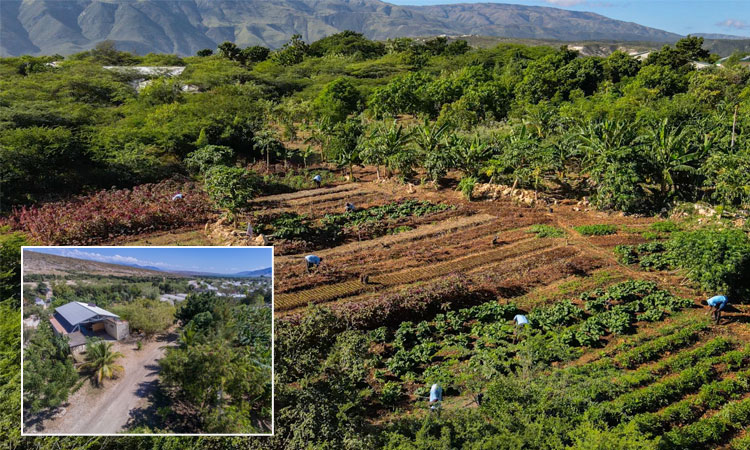One of the major differences people notice between conditions in Haiti and its neighbor on the island, the Dominican Republic, is the minimal amount of rainfall that Haiti gets relative to what falls in the DR. Rainfall in Haiti is not evenly distributed throughout the year but rather comes in heavy concentrations during the “rainy season,” with a few major storms dropping a lot of the annual rainfall. If only the amount of rainfall could be spread out for the whole year…
Well, there are exciting new projects that are achieving great success in doing just that, in a way. Wilner and I are discussing starting a new project that would focus on rainwater retention as a way to control erosion and keep the short-term rainwater available throughout the whole year. These methods of harvesting the rainfall smartly are effective at restoring water cycles in places like Haiti that are undergoing “desertification,” a term for turning into deserts due to a lack of soil moisture. These methods demonstrate that desertification can easily be reversed, improving the landscape and the environment, leading to improved living conditions and financial and social independence for the people.
These methods for harvesting rainfall involve simple “earthworks,” like making contour terraces in hillsides, swales, berms, gabion-cage check dams, and zuni bowls to capture rainwater and slow it down instead of it cascading down unprotected hillsides, eroding everything in its path to the seas. Unprotected hillsides and watersheds are now being eroded by the seasonal rainfall as the water runs off the land in sheets, without having time to soak deep into the ground. The earthworks slow down the storm water runoff and give it time to soak into the ground, restoring water tables and leaving abundant moisture deep into the soil, promoting protective vegetation.
The best example we have seen is the gabion cage check dams across rainwater drainage ways, which trap sediment and retain enough water to slowly provide water the whole year. Some projects are reporting that even after a short time, these methods are raising water tables from 240 feet underground to 30 feet, where hand-dug wells are once again effective. Many of these projects call themselves “reforestation projects without having to plant trees” because increasing the grounds’ capture of rainwater is allowing a wide variety of plants to spring forth, including many trees. We are considering how we can effect some of these methods in the hundreds of eroded drainage ways coming from the mountains surrounding us. If we can do some projects like making check dams in drainage ways, it would expand our reforestation efforts immensely. Stay tuned.
Rad Hazelip, Assistant Executive Director


